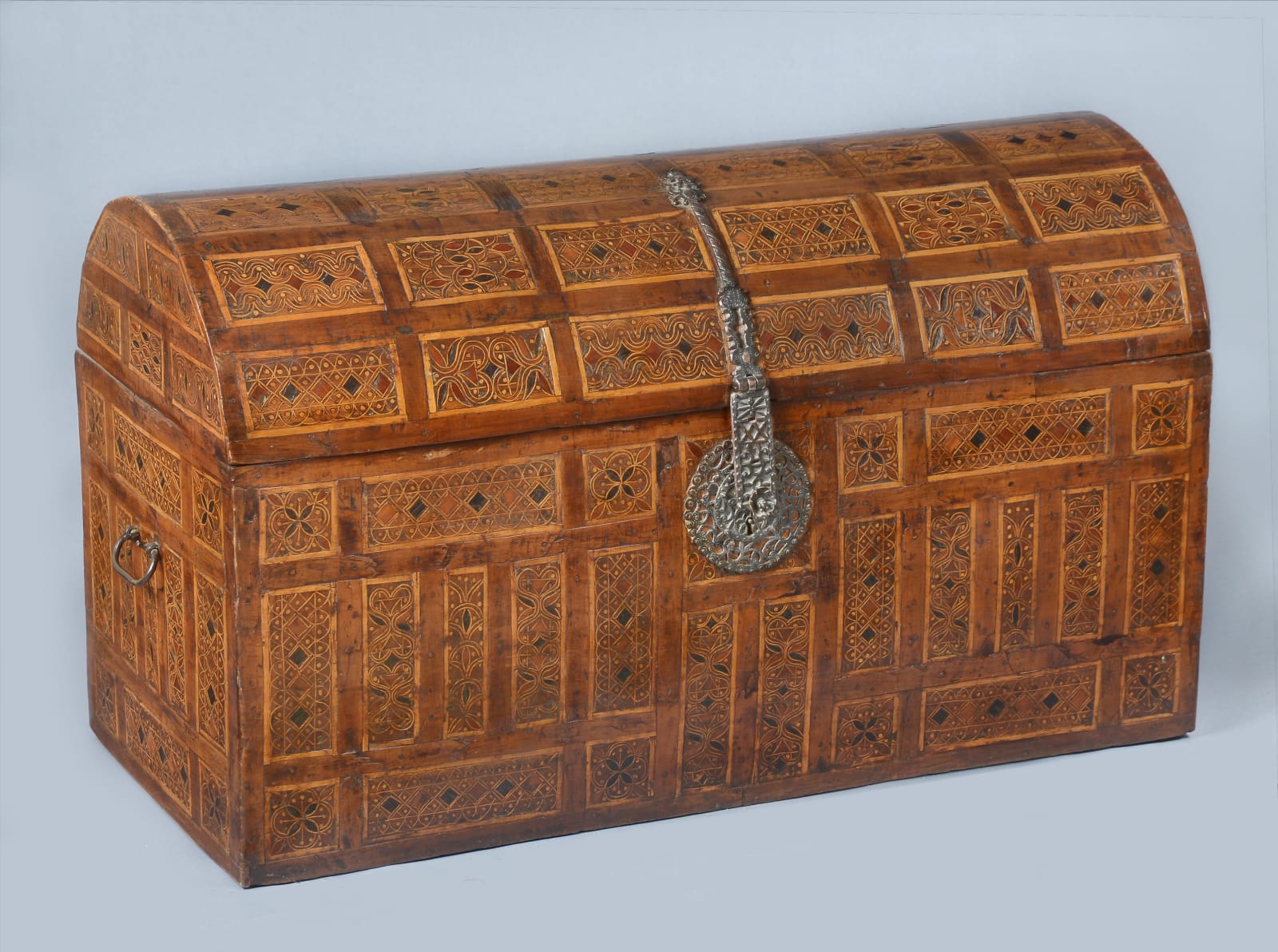Oaxaca Box, circa 1700
Wood, iron lock.
Width: 94 cm
Depth: 40 cm
Oaxacan style appears among the most known and studied Mexican productions with its characteristic inlaid technique of zulaque, using a bituminous paste of calcinated lime and black vegetal veneer extracted from dyewood. Threads are shaped with this paste and grafted into the grooves made on the wood through pressure, to create different decorative motifs, as in this chest, with its domed-shaped lid with a geometrical decoration. This kind of technique is applied to a variety of objects such as chests, as we see in this case, flat lid boxes called bufetillos, writing desks, etc.
During the Mexican viceroyalty times, the steep oaxacan hill was the scene of the Alta Villa of San Ildefonso. The people of this village excelled in their refined woodwork. Their loving hands and their nourished fantasies gave birth to these exquisite pieces. At the workshops of Analco, one of the two prominent neighbourhoods of the Alta Villa, there were numerous Europeans etchings at hand, mainly flamenco style, that were used as a source for the representation of the images displayed on the furniture. There is no doubt that the intellectual directors, Dominican monks and the direct sponsors gave the craftsmen a wide corpus of erudite images. Hence the richness of the iconographic repertoire of this furniture that presents mythological scenes or lectures of great complexity in their reading, from which the messages of the sacred history and those of humanistic tone stand out. There are also romantic scenes, urban, hunting and games sceneries or those of moral messages that reminded their owners of the importance of good judgement, harmony and fidelity. Others show the briefness of life, the vanity of luxury and terrene pleasures as well as the body’s humours, the five senses, the ages of man and the seasons of the year. Some objects simply displayed ornamental sceneries, coat of arms, animals and flowers.



